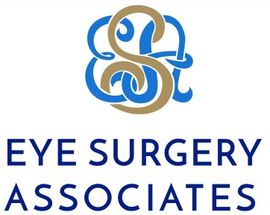Central Auckland, East Auckland, North Auckland, South Auckland, West Auckland > Private Hospitals & Specialists >
Eye Surgery Associates
Private Service, Ophthalmology
Today
Description
Consultants
-

Dr Yi Wei Goh
Ophthalmologist
-

Dr Hussain Patel
Ophthalmologist
-

Dr Monika Pradhan
Ophthalmologist
-

Dr Tracey Wong
Ophthalmologist
Referral Expectations
For GPs / Optometrists
Referral form here
Fees and Charges Description
Eye Surgery Associates are approved providers with most of the leading medical insurance companies.
Hours
| Mon – Fri | 8:30 AM – 5:00 PM |
|---|
Languages Spoken
Mandarin Chinese, English
Procedures / Treatments
Glaucoma is a group of diseases that can damage the eye’s optic nerve and may result in vision loss and blindness. Multiple factors are often important in causing glaucoma, but it is most commonly related to in an increase in pressure in the eye. Symptoms are generally absent until the condition has progressed to an advanced stage. Very occasionally, a rarer form of glaucoma can develop suddenly and symptoms may then include: headaches and aches around the affected eye, seeing halos around lights, sensitivity to light, blurred vision, nausea and vomiting. You may be more likely to develop glaucoma if you: have someone else in your family with glaucoma already have high pressure in your eye have experienced injury to your eye have or have had certain other eye problems have migraine or circulation problems. Glaucoma is more common in people over 50 years of age and more common in women than men. Diagnosis usually comes after consultation with an eye doctor. Signs of glaucoma may also be picked up at an optometrist’s eye examination. The following tests are used to diagnose and monitor glaucoma: Tonometry – measures eye pressure. It is often the first screening test for glaucoma. The eyes are numbed with eye drops and then examined. Dilated eye exam - this is done with an ophthalmoscope (which is a medical instrument that allows the doctor to look through the pupil to the back of the eye).The retina and optic nerve are then examined for any sign of damage. Visual acuity test – test to check distance vision using an eye chart. Visual field test – test to measure side (peripheral) vision. Pachymetry – test to measure the thickness of the cornea. Many other new techniques are emerging to help identify the likelihood of glaucoma and help determine its rate of worsening. Although glaucoma cannot be cured, early treatment can prevent further worsening of the condition and vision loss. Regular eye examinations will need to be continued life-long. Eye drops to decrease eye pressure are the most common early treatment. Surgery may be required, especially if medications are not taking adequate effect. Laser trabeculoplasty, in which a surgeon uses a laser to help the fluid drain from the eye, may be considered in some cases, but has limited effectiveness. More commonly, a trabeculectomy may be performed when other methods have failed to adequately control pressure. This is a medium length operation that makes a new opening for fluid to drain from the eye. Read more about glaucoma here
Glaucoma is a group of diseases that can damage the eye’s optic nerve and may result in vision loss and blindness. Multiple factors are often important in causing glaucoma, but it is most commonly related to in an increase in pressure in the eye. Symptoms are generally absent until the condition has progressed to an advanced stage. Very occasionally, a rarer form of glaucoma can develop suddenly and symptoms may then include: headaches and aches around the affected eye, seeing halos around lights, sensitivity to light, blurred vision, nausea and vomiting. You may be more likely to develop glaucoma if you: have someone else in your family with glaucoma already have high pressure in your eye have experienced injury to your eye have or have had certain other eye problems have migraine or circulation problems. Glaucoma is more common in people over 50 years of age and more common in women than men. Diagnosis usually comes after consultation with an eye doctor. Signs of glaucoma may also be picked up at an optometrist’s eye examination. The following tests are used to diagnose and monitor glaucoma: Tonometry – measures eye pressure. It is often the first screening test for glaucoma. The eyes are numbed with eye drops and then examined. Dilated eye exam - this is done with an ophthalmoscope (which is a medical instrument that allows the doctor to look through the pupil to the back of the eye).The retina and optic nerve are then examined for any sign of damage. Visual acuity test – test to check distance vision using an eye chart. Visual field test – test to measure side (peripheral) vision. Pachymetry – test to measure the thickness of the cornea. Many other new techniques are emerging to help identify the likelihood of glaucoma and help determine its rate of worsening. Although glaucoma cannot be cured, early treatment can prevent further worsening of the condition and vision loss. Regular eye examinations will need to be continued life-long. Eye drops to decrease eye pressure are the most common early treatment. Surgery may be required, especially if medications are not taking adequate effect. Laser trabeculoplasty, in which a surgeon uses a laser to help the fluid drain from the eye, may be considered in some cases, but has limited effectiveness. More commonly, a trabeculectomy may be performed when other methods have failed to adequately control pressure. This is a medium length operation that makes a new opening for fluid to drain from the eye. Read more about glaucoma here
- have someone else in your family with glaucoma
- already have high pressure in your eye
- have experienced injury to your eye
- have or have had certain other eye problems
- have migraine or circulation problems.
- Tonometry – measures eye pressure. It is often the first screening test for glaucoma. The eyes are numbed with eye drops and then examined.
- Dilated eye exam - this is done with an ophthalmoscope (which is a medical instrument that allows the doctor to look through the pupil to the back of the eye).The retina and optic nerve are then examined for any sign of damage.
- Visual acuity test – test to check distance vision using an eye chart.
- Visual field test – test to measure side (peripheral) vision.
- Pachymetry – test to measure the thickness of the cornea.
Cataracts are the most common age-related occurrence in eyes. The lens becomes thicker and stiffer and appears yellow and cloudy. Eventually it may turn white, changing the colour of the pupil. A cataract may cause your vision to become fuzzy in a progressive fashion and may also be the cause of disabling glare. Once a cataract affects vision too much, a cataract removal operation is generally advised. This decision is usually made in consultation with an eye specialist. The operation is almost always done under local anaesthetic. Once the cataract has been removed an artificial lens is put in to replace it. It is relatively short in duration and an overnight stay in hospital is not required. Post-operative care consists of eye drops and a check at 1-2 days then after 2-4 weeks. Read more about cataracts here
Cataracts are the most common age-related occurrence in eyes. The lens becomes thicker and stiffer and appears yellow and cloudy. Eventually it may turn white, changing the colour of the pupil. A cataract may cause your vision to become fuzzy in a progressive fashion and may also be the cause of disabling glare. Once a cataract affects vision too much, a cataract removal operation is generally advised. This decision is usually made in consultation with an eye specialist. The operation is almost always done under local anaesthetic. Once the cataract has been removed an artificial lens is put in to replace it. It is relatively short in duration and an overnight stay in hospital is not required. Post-operative care consists of eye drops and a check at 1-2 days then after 2-4 weeks. Read more about cataracts here
This is a complication of diabetes and is caused by small blood vessel damage within the retina of the eye. It commonly affects both eyes and may cause permanent loss of vision. Macular oedema is sometimes also present with diabetic retinopathy. Macular oedema is when fluid leaks into the retina and causes swelling and blurred vision. This may occur at any stage of diabetic retinopathy, but is more common as the disease progresses. There are often no symptoms in the early stages but as the condition progresses vision may begin to become impaired. Often visual loss may be sudden and without warning. This is why it is imperative that at-risk diabetics have frequent eye checks. Poorly controlled diabetes and pregnancy in diabetes are risk factors for developing this condition. Often, first-stage diabetic retinopathy requires no active treatment on the eye but requires stabilisation of diabetes and regular eye examinations. With progressive retinopathy, a laser treatment called the PRP laser can be used. This works by shrinking enlarged blood vessels to prevent further bleeding into the retina. Severe bleeding may require a surgical procedure called a vitrectomy, where blood is surgically removed from the eye. Treatment of macular oedema, if present, is by focal laser treatment. Vision is stabilised by reducing the degree of fluid leakage into the retina. Often more than one treatment is required. Read more about diabetic retinopathy here
This is a complication of diabetes and is caused by small blood vessel damage within the retina of the eye. It commonly affects both eyes and may cause permanent loss of vision. Macular oedema is sometimes also present with diabetic retinopathy. Macular oedema is when fluid leaks into the retina and causes swelling and blurred vision. This may occur at any stage of diabetic retinopathy, but is more common as the disease progresses. There are often no symptoms in the early stages but as the condition progresses vision may begin to become impaired. Often visual loss may be sudden and without warning. This is why it is imperative that at-risk diabetics have frequent eye checks. Poorly controlled diabetes and pregnancy in diabetes are risk factors for developing this condition. Often, first-stage diabetic retinopathy requires no active treatment on the eye but requires stabilisation of diabetes and regular eye examinations. With progressive retinopathy, a laser treatment called the PRP laser can be used. This works by shrinking enlarged blood vessels to prevent further bleeding into the retina. Severe bleeding may require a surgical procedure called a vitrectomy, where blood is surgically removed from the eye. Treatment of macular oedema, if present, is by focal laser treatment. Vision is stabilised by reducing the degree of fluid leakage into the retina. Often more than one treatment is required. Read more about diabetic retinopathy here
Eye Surgery Associates treat age related macula degeneration in addition to a range of other conditions that affect the macula and retina.
Eye Surgery Associates treat age related macula degeneration in addition to a range of other conditions that affect the macula and retina.
Eye Surgery Associates treat age related macula degeneration in addition to a range of other conditions that affect the macula and retina.
This is when the retina detaches, meaning it is lifted or separated from its normal position within the eye. An acute retinal detachment requires urgent assessment and appropriate treatment. Unless prompt and effective treatment is given, some forms of retinal detachment may lead to irreversible blindness. Signs and symptoms include: a sudden or gradual increase in floaters, deterioration in vision, cobwebs or specks with the visual field, light flashes in the eye or the appearance of curtains over the visual field. You are more likely to have a retinal detachment if you are very short-sighted or have had an injury or previous surgery to the eye. For minor detachments, a laser or freeze treatment (cryopexy) are used. Both therapies re-attach the retina. For major detachment, surgery will be necessary. A band is often put around the back of the eye to prevent further detachment. Surgical treatment is usually a vitrectomy, where the jelly (vitreous) is removed from the eye. This often involves a hospital stay. It can take several months post-surgery to see the final visual result.
This is when the retina detaches, meaning it is lifted or separated from its normal position within the eye. An acute retinal detachment requires urgent assessment and appropriate treatment. Unless prompt and effective treatment is given, some forms of retinal detachment may lead to irreversible blindness. Signs and symptoms include: a sudden or gradual increase in floaters, deterioration in vision, cobwebs or specks with the visual field, light flashes in the eye or the appearance of curtains over the visual field. You are more likely to have a retinal detachment if you are very short-sighted or have had an injury or previous surgery to the eye. For minor detachments, a laser or freeze treatment (cryopexy) are used. Both therapies re-attach the retina. For major detachment, surgery will be necessary. A band is often put around the back of the eye to prevent further detachment. Surgical treatment is usually a vitrectomy, where the jelly (vitreous) is removed from the eye. This often involves a hospital stay. It can take several months post-surgery to see the final visual result.
Public Transport
The Auckland Transport website is a good resource to plan your public transport options.
Website
Contact Details
3 Orbit Drive, Rosedale, Auckland
North Auckland
-
Phone
0800 750 750 or (09) 275 1750
-
Fax
(09) 282 4148
Healthlink EDI
esa4eyes
Email
Website
Contact us online here
Unit D2
3 Orbit Drive
Rosedale
Auckland 0632
Street Address
Unit D2
3 Orbit Drive
Rosedale
Auckland 0632
Postal Address
Unit D2
3 Orbit Drive
Rosedale
Auckland 0632
613 - 615 Great South Road, Manukau, Auckland
South Auckland
-
Phone
0800 750 750 or (09) 275 1750
-
Fax
(09) 282 4148
Healthlink EDI
esa4eyes
Email
Website
6 Pacific Rise, Mt Wellington, Auckland
Central Auckland
-
Phone
0800 750 750 or (09) 275 1750
-
Fax
(09) 282 4148
Healthlink EDI
esa4eyes
Email
Website
Mauranui Clinic, 86 Great South Road, Epsom, Auckland
Central Auckland
-
Phone
0800 750 750 or (09) 275 1750
-
Fax
(09) 282 4148
Healthlink EDI
esa4eyes
Email
Website
Was this page helpful?
This page was last updated at 11:18AM on December 6, 2023. This information is reviewed and edited by Eye Surgery Associates.

